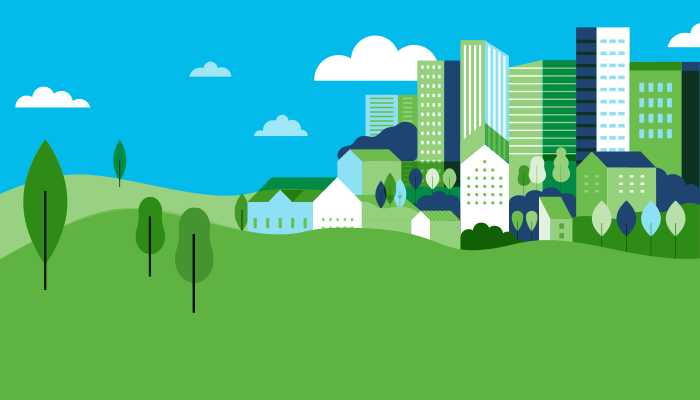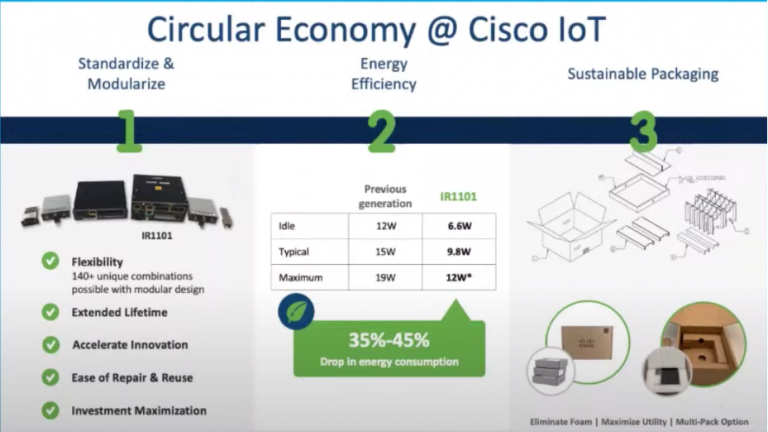- I tested a Pixel Tablet without any Google apps, and it's more private than even my iPad
- My search for the best MacBook docking station is over. This one can power it all
- This $500 Motorola proves you don't need to spend more on flagship phones
- Finally, budget wireless earbuds that I wouldn't mind putting my AirPods away for
- I replaced my Linux system with this $200 Windows mini PC - and it left me impressed
Addressing the Climate Crisis: How Cisco Technology Can Help #CiscoChat – Cisco Blogs

We are at a fascinating time in the technology industry. As Cisco Fellow Rakesh Chopra put it, we are seeing a confluence of technology, business, and moral imperatives that drives focus on sustainability in a way that has never been seen before and creates the perfect melting pot for innovation.
On October 8th, 2021, Stephanie Chan from the Cisco Newsroom moderated an informative and timely #CiscoChat panel of Cisco experts to discuss Cisco’s impactful initiatives in this realm. The panel included:
- Rakesh Chopra: Cisco Fellow
- Sripriya Narayanan: Product Manager, IoT
- Dr. Cynthia Temesi: Country Digital Acceleration Program
Read on for key highlights from this sustainability-focused #CiscoChat:
Silicon One
The use of Cisco products by our customers accounts for the majority of Cisco’s greenhouse gas emissions. As such, reducing the amount of energy Cisco products use is a top priority for the company and critical to our goal to reach net zero emissions by 2040. One innovation that dramatically reduced energy consumption for Cisco’s high-performance routers is the Silicon One chipset, unveiled in December 2019, which has since been deployed in eleven new devices and counting.
The fundamental limitation Cisco is solving for in networking is the use of power and the “life of a watt,” and Silicon One tackles this head-on. Compared to Cisco’s previous generation NCS6008 router, which was seven feet tall and took five pallets to ship, the Cisco 8201, which runs on Silicon One, is about 2 inches tall, reduces power consumption by 96 percent, delivers 39 percent more bandwidth, reduces shipping weight by 62x, and brings shipping volume down an astonishing 202x. Through this example and more, Rakesh Chopra, instrumental to Silicon One’s development, walked us through how Cisco silicon innovations are making products more sustainable and guiding the future of engineering for Cisco and the industry at large.
Country Digital Acceleration
Dr. Cynthia Temesi is involved in Cisco’s Country Digital Acceleration (CDA) program, where Cisco collaborates with government, academic, and business leaders in a region, country, or nation to bring to life their digital agenda and solve their most pressing societal issues. Currently, the CDA team partners with about 40 countries and has about 1000 projects underway, many of which focus on environmental sustainability and business investments for public good. Dr. Temesi shared three examples of Cisco CDA in action:
- ASHRAE: Cisco is helping the ASHRAE, a standards body advancing sustainability in heating, ventilation, air conditioning, refrigeration, and allied fields, design a smarter building – ultimately moving to a net-zero building.
- Department of Agriculture and small strategic businesses in India: The team is building an agricultural-digital platform with IoT sensors in rice paddies and prawn farms that measure moisture, temperature, and pH levels. This data is combined with satellite images and AI analytics to create insights aggregated into a dashboard for farmers.
- Business and technology partners in the UK: A pilot is underway for a vehicle-to-grid technology that improves the commercial viability of fleet management and sustainability of electrical fleets.
Dr. Temesi walked us through these examples and others of how Cisco works with customers, suppliers, and partners on reducing our collective carbon footprint.
Learn more about Cisco Country Digital Acceleration.
Internet of Things
Cisco IoT innovations are enabling customers in many sectors to move toward more renewable energy sources and a circular economic model, which will be critical to reducing the impacts of climate change. As a Product Manager in IoT, Sripriya Narayanan defines projects that go out into the world with thousands of cross-industry customers (utilities, oil and gas, transport, and more) deploying tens of thousands of Cisco devices.
Sripriya dug into a case study on Cisco’s Germany-based customer Innogy and how they use Cisco IoT technology to balance renewable energy generation and consumption. Innogy and Cisco’s partnership has led to the development of a new router, the IR1101, that meets energy standards and protocols on top of a secure, modular, and scalable network. As a result of this work and other initiatives in Germany, renewable sources generated 40 percent of Germany’s energy for the first time ever in 2018.
You may be wonder what other benefits customers experience when companies commit to reducing their environmental footprint. Sripriya also shared that the modular design of the IR1101 extends the lifespan of the product by ten-plus years, helps conserve natural resources like metal and paint, and makes them easier to disassemble. These and other benefits of “circular design” principles are shown in the graphic below.

Between doing our best to mitigate the climate crisis and cutting-edge technology, there is a bridge. Learn more about environmental sustainability at Cisco.
Share:


